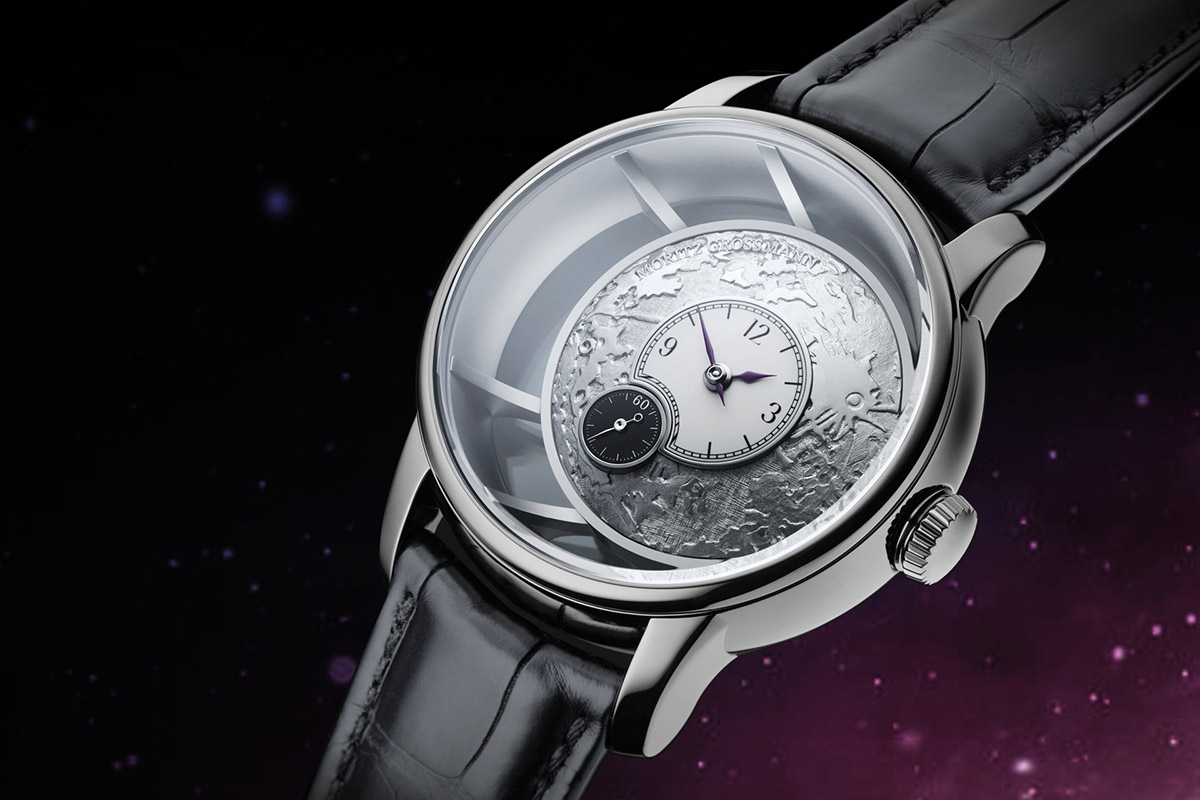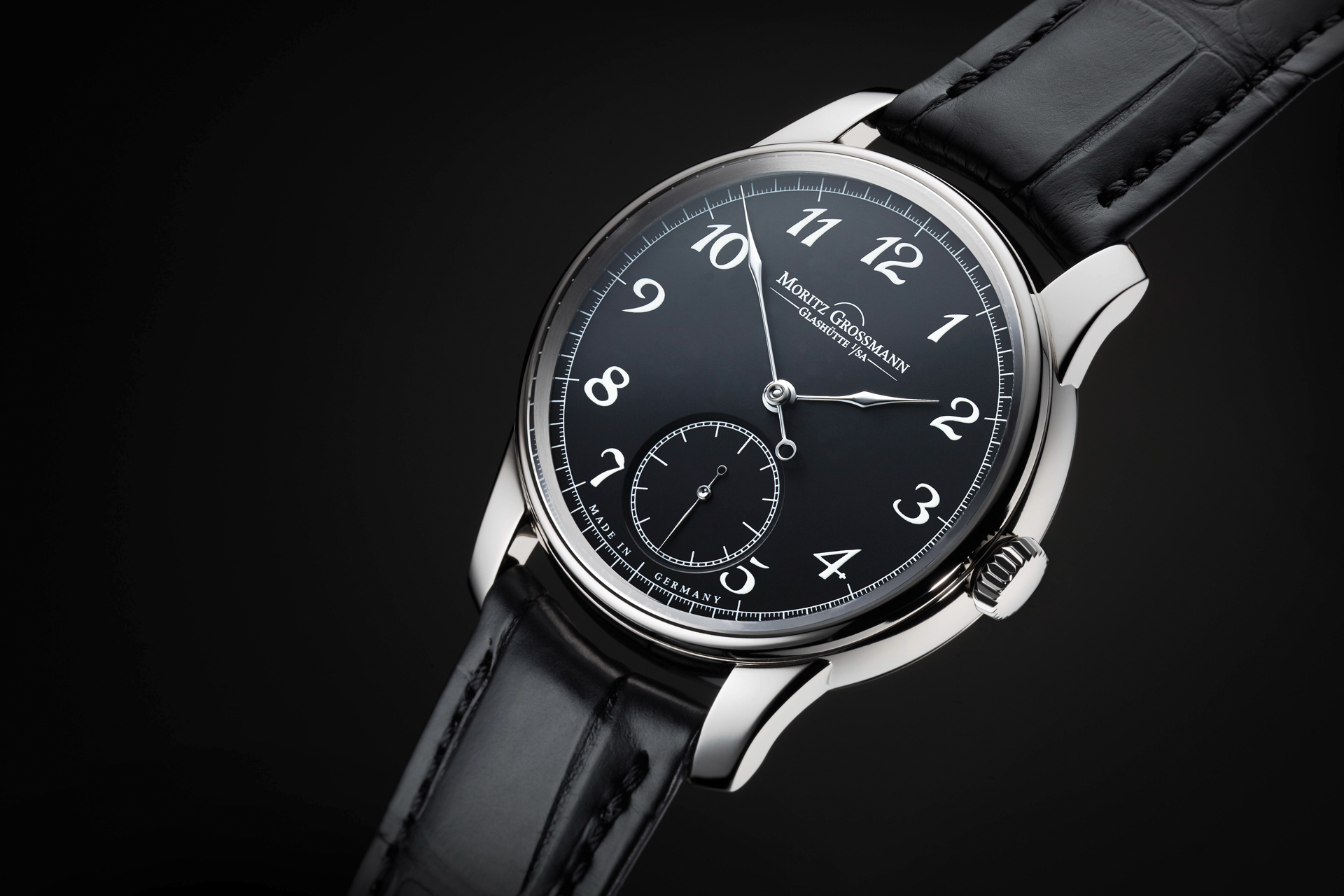This website uses cookies so that we can provide you with the best user experience possible. Cookie information is stored in your browser and performs functions such as recognising you when you return to our website and helping our team to understand which sections of the website you find most interesting and useful.
Moritz Grossmann is reinventing the art of German watchmaking
By Rachel Ingram | 16 August 2019 | Lifestyle, Style
As Moritz Grossmann launches a series of pioneering movements, Tempus speaks to CEO Christine Hutter about how the brand is transporting German watchmaking into stunning new realms

The birthplace of German watchmaking is not in a major city, as you might expect, but instead a small town an hour’s drive outside Dresden, nestled in the countryside not far from the Czech border. Despite its tiny size – the town has a population of just 7,000, one restaurant and no hotel – Glashütte and its inhabitants have played a major part in the history of horology since the 1850s.
To this day, many inhabitants work for one of the town’s watch manufacturers. Christine Hutter was one such woman. After several years gaining experience within the workshops of well-established Glashütte brands, she branched out on her own to create a new manufacture that reinterprets ancestral craftsmanship with modern technology.
Inspired by Karl Moritz Grossmann, 19th-century founder and director of the German Watchmaking School, she acquired the rights to use his name and in 2008, Moritz Grossmann was born.
“Grossmann was one of the most eminent watchmakers in the 19th century in Glashütte,” explains Hutter, who remains the company’s CEO. “He started in 1854 with his own workshop where he produced pocket watches, pendulum clocks and measuring instruments. Grossmann wanted to give his knowledge to other people, so he wrote a lot of books, he wrote essays, he translated books from other languages into German. One of his biggest developments was the concept and establishment of the German Watchmaking School in 1878.” Without this school, the town’s crucial craft could have been lost. >>
“I came to Glashütte in 1996 and I recognised the importance of the name of Moritz Grossmann,” Hutter continues. “My vision was to start a manufacture on the highest level that resonates with the name Moritz Grossmann. In 2008, we established Grossmann Uhren GmbH and started from scratch to set up a new manufacture.”
Last year, the company celebrated its 10-year anniversary. In a single decade, it has grown from one woman’s dream to a company with 50 employees with the capabilities to prototype watches and produce 85% of each watch’s movements in-house – an impressive feat considering the age and relatively modest size of the brand.
Despite its burgeoning success, Hutter is insistent that Moritz Grossmann, like the man who inspired it, will always be an independent force. “We are happy to be an independent brand because it gives us more flexibility,” she says. “We can sit together, make decisions, get up from the table and start to work with it. It also gives us the flexibility to be innovative in design and in the development of the movements. While our quality is very, very high, we do not have to follow rules set by somebody else, so we can decide what we think is the best way to go on.”
The brand’s philosophy is defined by Grossmann’s 1880 book, The Construction of a Simple but Mechanically Perfect Watch. “The design of our watches is classic on the outside, but inside it’s mechanical perfection,” Hutter explains. The workshop has developed a number of unique mechanisms such as a movement that can be wound by twisting the strap – an idea created with women’s watches (and, more specifically, women’s nails), in mind. Another innovative creation was a stop-seconds mechanism for the Tourbillon that contains a brush made of human hair – trial and error revealed that human hair is, in fact, the perfect balance of rigidity and elasticity.
Earlier this year, the brand unveiled three watches containing three brand new movements. These were the GMT with a second time zone, the Cornerstone with a rectangular movement to fit a rectangular case – a first for the brand – and, most excitingly, the Hamatic which has a particularly special self-winding movement.
“The development is outstanding because it’s a self-winding movement and it doesn’t work with a rotor,” explains Hutter. “It works with a hammer automatic, so the hammer is moving backwards and forwards. Thanks to the special ratchet mechanism, hammer movements from just five degrees can be used to wind the mainspring.” >>
Related: Meet the women shaking up the world's watchmaking industry

At the Moritz Grossmann Roadshow in London in July, Hutter unveiled three additional timepieces. The Power Reserve Vintage was inspired by Grossmann’s history of crafting pocket watches, and pays homage to the watchmaker’s unique style of craftsmanship through special design elements. “On the dial you will find the old logo of the old style of the pocket watches of Moritz Grossmann,” says Hutter. “The dial is also made with the fine Roman numbers and the very slim and fine hands.”
Moritz Grossmann is well known for its hands – the manufacturer produces all of its hands in-house, a very unusual offering in the world of watchmaking. The maker also polishes and finishes all of its parts to an exceptional quality from its workshop – adding even further to the high quality of the craftsmanship.
While many of the brand’s timepieces feature an elegantly simple design, as per the manufacturer’s philosophy, two of the new launches stretch the brand’s design limits. Moon in Space – a homage to the Earth’s natural timekeeper, the moon – is a bold timepiece featuring an intricate face where a silver moon appears to float across the sky, accompanied by two comet-like dials counting the hour and minute and the seconds.
Coming back down to Earth, the new Arabic Black & White, also unveiled in July, features a slim case and high-contrast design – the deep black dial and strap juxtapose beautifully with white-gold Arabic numerals and accents.
At 10 years young, Hutter and her growing team have accomplished more than many other watchmakers have in decades. And, with the bold designs unveiled this year signifying a new era of technical and design innovation, it seems that Moritz Grossmann is bound to continue growing its status as not only one of the finest watchmakers in Germany, but on Earth.








